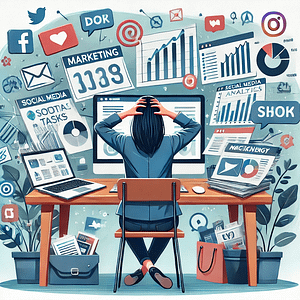Businesses must continuously innovate to attract and retain potential leads. One powerful and engaging strategy that has gained traction is gamification for lead generation. By turning prospects into players, gamification leverages the inherent human love for games to drive engagement and encourage action.
This article explores the psychology behind gamification, provides examples of successful campaigns, and offers practical steps to gamify your lead generation efforts.
The Psychology Behind Gamification for Lead Generation
Gamification taps into fundamental aspects of human psychology. Here are a few key principles:
- Intrinsic Motivation: Games stimulate intrinsic motivation by providing a sense of accomplishment, autonomy, and mastery. When prospects feel they are progressing and achieving goals, they are more likely to remain engaged.
- Social Influence: Leaderboards and social sharing features leverage social influence, encouraging users to compete and share their achievements with peers.
- Reward Systems: Badges, points, and rewards create a sense of gratification, driving continued participation and engagement.
A study by Aberdeen Group found that companies using gamification in marketing saw a 48% increase in engagement.
- Aberdeen Group
Successful Gamification Campaigns
- Nike+ Run Club: Nike incorporated gamification through challenges, leaderboards, and rewards, turning running into a game. This approach significantly boosted user engagement and brand loyalty.
- Starbucks Rewards: The Starbucks Rewards program uses gamified elements such as stars, levels, and rewards to encourage repeat purchases and brand loyalty.
- Duolingo: The language-learning app Duolingo employs gamified features like streaks, levels, and achievements to keep users motivated and engaged.
Salesforce reported that gamification can increase conversion rates by up to 7x
- Salesforce
Practical Steps to Implement Gamification
- Identify Your Goals: Determine what you want to achieve with gamification. Is it increased engagement, higher conversion rates, or improved customer retention?
- Understand Your Audience: Know what motivates your audience. Are they competitive, goal-oriented, or social? Tailor your gamification strategy accordingly.
- Incorporate Game Mechanics:
Leaderboards: Foster competition and social proof by displaying top performers.
Badges and Rewards: Offer badges, points, or tangible rewards for completing actions or reaching milestones.
Challenges: Create challenges that encourage users to engage with your brand and share their progress. - Track and Optimize: Use analytics to track the effectiveness of your gamification efforts. Adjust and optimize based on user feedback and engagement metrics.
- Promote Social Sharing: Encourage users to share their achievements on social media, amplifying your reach and attracting new leads.
According to Gartner, 70% of global 2000 companies use gamification, leading to higher customer retention rates.
- Gartner
Gamification can transform your lead generation efforts by making them more interactive and enjoyable for potential leads.
By understanding the psychology behind gamification and implementing strategic game elements, you can increase engagement, drive conversions, and open new markets. Start small, measure your results, and iterate to find the perfect blend of gamification for your audience.





